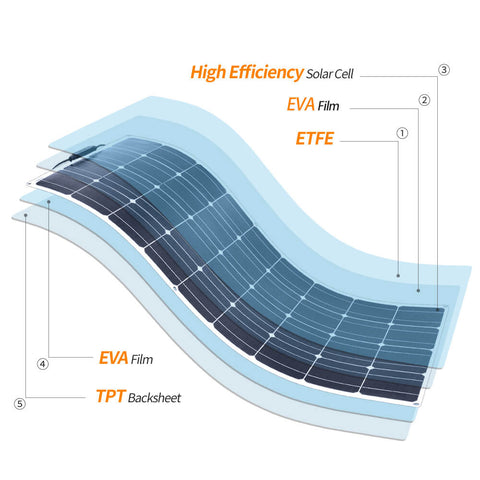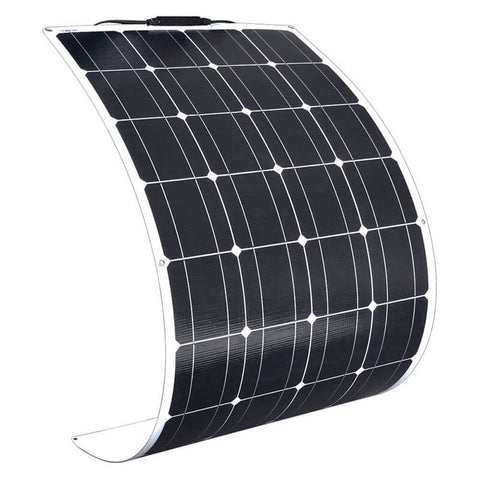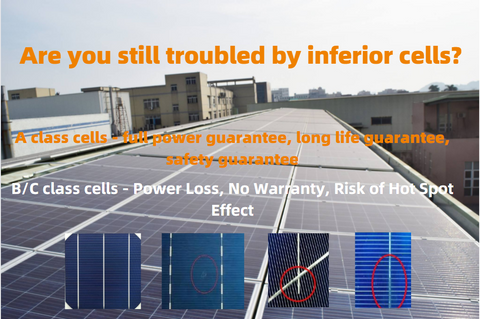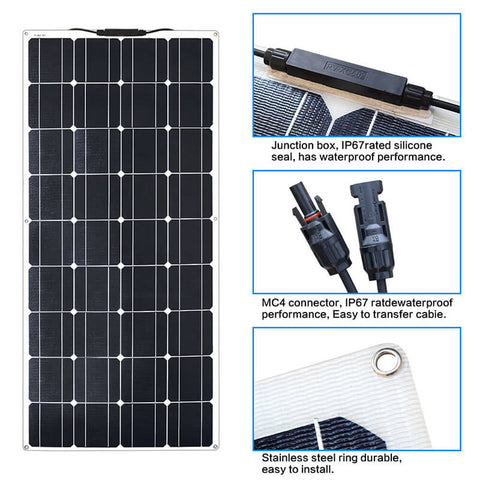
Why do solar panel prices vary so much?

When many customers choose solar panels, they will wonder why the price of solar panels with the same appearance is very different?
#01
lighter weight

Before the RV leaves the factory, the RV manufacturer will limit the weight of the RV to comply with the national policy. For example, the weight of the trailer-type RV cannot be higher than 700KG. The weight of the RV itself, various household appliances, and daily necessities have taken up a lot of weight. Solar panels are as light as possible while maintaining efficiency, strength, and longevity. Of course, in this case, the lighter the solar panel, the higher the price.

At present, the lightweight solar panels using ETFE material packaging materials on the market weigh only 30% of the weight of ordinary glass panels. While the weight is reduced, the durable impact resistance in the outdoor scene of the RV can still be fully guaranteed.
#02
Excellent heat dissipation
Many RV friends think that the more sunlight the solar panel is exposed to, the hotter the solar panel, and the greater the power generation of the battery. In fact, when the solar panel is at 25°C and the illumination is 90°, it is the moment when its power generation efficiency is the highest. When the temperature exceeds 25°C, the power generation of the solar panel decreases by 0.3% for every 1°C increase in temperature. Therefore, when ordinary glass is used as the packaging surface, the temperature of the cell will be greatly increased due to the light-transmitting and heat-conducting properties of the glass, thereby affecting the power generation.

When the temperature is high in summer, touching the glass surface of the solar panel is a high-temperature state that can be fried eggs. In this case, although there is plenty of sunshine outside and the outdoor temperature is high, the power generation is not as much as the customer expected.
#03
A class standard cell
Crystalline silicon cells determine the quality of solar panels
The solar panel is composed of crystalline silicon cells, and then the solar panel is composed of the packaging process. Therefore, the type and quality of "invisible cells" are one of the important determinants of solar panel power generation efficiency and service life. Cells are divided into monocrystalline silicon and polycrystalline silicon by type. As the technology matures, monocrystalline silicon has gradually become the mainstream due to its advantages in price and efficiency.

Because the cells that make up the panel are graded, the panels are also graded. The cells include three levels of A, B, and C.
A-class cells are basically free of any flaws, and there may be a few scratches.
B-class cells may have defects such as slurry leakage, virtual printing, and broken grids.
C-class cells ar e mainly recycled cells, which may have problems such as chipping, large-area virtual printing, sloughing off, and serious contamination.
But these solar cells are all legal and are used in solar panels as qualified products. The price, power generation effect, and service life of different quality grades will be different. However, as qualified products, B and C grade cells have low prices and will be used by some merchants. It also explains the huge difference in market prices for the same 100-watt solar panels.

The silicon material used in solar cells is very fragile and easily damaged, so the packaging process will also affect the integrity of the cells.
After the solar panel completes the packaging process, it needs to be fully tested by the EL test instrument. Panels that show cracks and black agglomerates under the EL test are Class B or Class C solar panels, and these black shadows are broken grids and cracks.
Invisible to the naked eye, many customers will feel that these solar panels are indistinguishable. However, in actual use, there will be great differences between the two in terms of power generation efficiency and life. The splinter and debris will not only affect the power generation efficiency and use but also cause safety hazards due to local continuous heating.

To sum up: the reasons that affect the price of batteries are as follows:
① The encapsulation material of the solar cell, the lighter the material, the less weight the body is subjected to, the less damage to the car, and the higher the price.
② The encapsulation materials (surface material, aluminum frame, backplate, etc.) of the solar panel have good corrosion resistance, and the better the heat dissipation, force, and power generation of the solar panel, the higher the price.
③ Selection of solar monocrystalline silicon wafers, the higher the quality of monocrystalline silicon, the higher the power generation efficiency of solar panels and the higher the price.
Therefore, from a long-term perspective, if you want higher power generation efficiency and more durability, you still need to choose high-quality solar panels from good brands.
- Choosing a selection results in a full page refresh.
